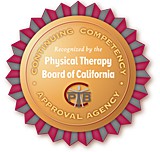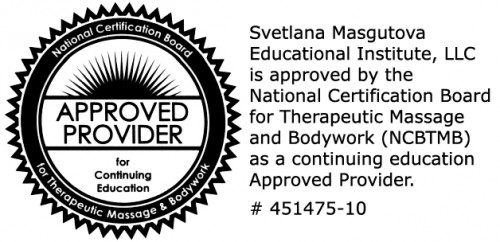
Learning The Method
MNRI® Aqua Reflex Integration
Movements resembling the swimming motor/postural activity in newborns and infants in the water are called swimming or aqua behavior. This behavior is based on the display of aquatic sensory-vestibular-motor reflexes, such as swimming, amphibian, floating, diving, breath control and some other.
These reflexes as any other infant reflexes are inborn, involuntary and automatic responses displayed when in the water. It presents the unit of the Central Nervous System functioning and can be used as the tool for the assessment of the state of the nerve system maturation in an infant, young child and adult. These reflexes in norm are fully functional before infants and young children can walk. They are on the level of development of lower motor neurons (brain stem and diencephalon) and serve the skills and abilities of swimming (on level of cortical programming and control).
Children and adults with atypical neurodevelopment may demonstrate retained and/or non-integrated reflex. Participants will engage in both the discussion and hands-on supervised practice of the coursework in the water for individuals with deficits in neurosensorimotor development. They will be introduced to information about the neuro-anatomy and neurophysiology of a reflex, its specifics in the water environment, how to work with protection and survival, and resources of the aqua responses to strengthen the neurodevelopmental process. It will demonstrate the possibilities of the work for healthy children and adults.
This course demonstrates reflex integration techniques for the gravity and qualities of the movement and muscle activity, and brain functioning that differ from those functioning in the air environment. It explores how water activates stress and survival, the establishment of safety and neurosensorimotor processing when being in this environment. Swimming and emersion in water are natural processes. When reintroduced to swimming at a later age, stress is anchored by retained Moro (frightening reflex), fear for exploration of the water, other environment/objects, and low motivation for learning. These can be reasons for poor neurosensorimotor integration. Many of these neurodeficits support reflex integration in the water because of its innate traits – activation of the breathing, slowed motion, soft and generalized touch, and freedom from gravity.
This program will facilitate optimal brain functioning, psychological/emotional comfort, health, motivation, cognition and emotional responses through repatterning and integration of genetically given motor patterns – reflexes.
Reflex patterning and integrating exercises are aimed at the coordination of the sensory- motor system and reflex schemas through the development of positive protection and survival. Participants will be introduced to the sensory and motor modality techniques accenting on the work to the release the of stress or traumatic experience in the past (including inhibition of breathing at birth), and also on the neurodevelopment and learning challenges using reflex patterns. The techniques for repatterning these reflex patterns include: Breathing (Inhale-Hold, Exhale-Hold), Moro and Fear Paralysis, Core Tendon Guard, Hand Grasp, Hands Pulling, Galant, Perez, Head Righting, STNR, ATNR, Segmental Rolling and Spinning, and other reflex patterns. Discussion of stressful/traumatic experience in the water (traumatic birth, early post-trauma or PTSD concerned with water) results in the inhibition of reflex development and maturation, increased over-protection and survival blocking successful functioning.
Aqua repatterning integration techniques for reflex patterns will be introduced to create a sufficient neurophysiological basis for feeling safe, inner strength, motivation, organization of proper perception and processing of the input, and development of different cognitive skills – visual, auditory, and cognitive process (strategies, speed of thinking, planning of for actions, analysis, decisions). Postural control mechanisms will also be addressed. Exercises for development and maturation of the reflex patterns concerned with emotional stability will be discussed. This program will offer MNRI® exercises, movements and techniques that can be used with children and adults with deficits in the sensorimotor sphere, neurodevelopment, poor/improper protection mechanisms formation; tendencies for stress, PTSD, fear and phobias, instable behavior, emotional disorientation, motor and speech delays. It also can be used as a stress release program for individuals of any age, and physical and mental state and talents.
Upon successful completion of the three-day, 24-hour ‘MNRI®: Aqua Reflex Integration. Optimize Neurosensorimotor Developmental Resources’ course participants will:
- Explain the Masgutova Neurosensorimotor Reflex Integration (MNRI®) Method and its scientific origins.
- Describe the role of a primary reflex and its sensory, motor and central nervous system mechanisms.
- Describe progression of primary motor reflex patterns beginning in utero and continuing through life.
- Describe Vygotsky’s Concept of Reflex development and its impact on the strategies of the Masgutova Method.
- Demonstrate the role primary infant reflex patterns play in establishing subsequent related motor reflex schemes and the development of advanced motor, communication and cognitive abilities and emotional and behavioral regulation.
- Explain how the dynamic and postural reflexes are called the “missing link” with its synthesizing information on reflex integration and effect of higher and lower nervous systems.
- Demonstrate the role primary motor reflex patterns play in the maturation of more complex related motor reflex schemes (sitting-up, crawling, and others), development of learned motor, communication, and cognitive abilities, and in improving potential across an individual’s lifespan.
- Describe the links of the reflex repatterning in the water and the protective responses creating positive “anchors” for enhanced breathing, tactility, vestibular-proprioceptive system support, and neurodevelopment and neuroplasticity.
- Demonstrate how the use of aqua reflex integration improves physical abilities through the application of reflex patterns in the water (self-awareness, flexibility, precision, goal-orientation, range) and improves the physiology of a reflex circuit.
- Describe the links between aquatic reflexes (floating, swimming and diving, breathing) and other dynamic and postural reflexes.
- Describe how the following reflexes develop antigravity and cognitive skills: Moro, Fear Paralysis, Breathing, Head Righting, Trunk Extension, Tonic Labyrinthine in Flexion and Extension, Core Tendon Guard, STNR, ATNR, Galant, Perez, Hands Pulling, Sequential Rolling and Spinning, and others.
- Explain how reflexes effect the development of vestibular-proprioceptive, visual and auditory systems.
- Describe how Moro, Fear Paralysis, breathing and other reflex patterns affect muscular-tendon-ligaments tone regulation, postural control, and antigravity abilities of the individual.
- Describe the basis for the formation of primary links of motor activity in the water and their influence on proprioceptive and cognitive coordination involving visual stress release, acoustic release and activation, and vestibular-kinesthetic-motor memory.
- Describe how MNRI® techniques, games, and activities enhance and motivate the reflex integration processes in and out of the water.
- Apply supervised training on how to conduct an evaluation of motor and reflex patterns to recognize nonintegrated or immature reflex patterns effected by stress or trauma.
- Explain specific techniques for dysfunctional and pathological reflex patterns that respond to repatterning in a water environment.
- Demonstrate individual corrective ‘Aqua Reflex Integration’ programs based on evaluation to enhance overall emotional, motivational, cognitive and motor development.
- Describe exercises that can be used with children and adults, for the development and maturation of the reflex patterns concerned with emotional stability, stress, PTSD, fear and phobias, and other behavioral concerns.
- Describe appropriate strategies to incorporate the use of the MNRI® Aqua Reflex Integration program into a daily practice with clients.
- Demonstrate and practice the following motor patterns and reflex patterns:
- “Head Extension ↔ Head Up-righting
- Trunk Extension and Stabilization
- Sequential Side Rotation (Segmental Rolling of Head ↔ Shoulder ↔ Hip)
- Core Tendon Guard (Lower Gate-Upper Gate)
- Jumping (Flying and Landing)
- Walking (Leg Cross Flexion ↔ Extension)
- Tactile Bridge for Bonding (for stress release and Bonding)
- Demonstrate and practice will be given to the following motor patterns and reflex patterns for Breathing Reflexes:
- Inhalation-Exhalation Cycle
- Inhale-Hold
- Diving Reflex
- Exhale-Hold
- Demonstrate and practice the following motor patterns and reflex patterns:
• Moro Embracing • Fear Paralysis • Head Tilting–Neck Flexion
• Head Up-Righting • Hand Grasp • Hands Pulling
• Trunk Extension • Galant • Perez
• STNR • Leg Cross Flexion-Extension
• ATNR • Crawling • Sequential Side Rotation
• Spinning • Pavlov Orientation Reflex - Demonstrate and practice Aqua Reflex Integration procedures and exercises:
- facilitate the sensory, and sensory-motor integration processes using qualities of tactile receptors (short- and long-term adaptation, specialization, thermal, acoustic, light, mechanical sensations) and proprioceptors in joints and muscles (stretch, rotation, compression, flexion-extension)
- improve physical abilities through the application of reflex patterns in water (self-awareness, flexibility, precision, goal-orientation, range)
- optimize functioning of the physiology of a reflex circuit utilizing the properties of water – resistance (viscosity) and change in gravity control
Prerequisite: MNRI® Dynamic & Postural Reflex Integration
Time Agenda:
MNRI®: Aqua Reflex Integration
Optimize Neurosensorimotor Developmental Resources
Day 1:
Hour 1: Masgutova Neurosensorimotor Reflex Integration
Hour 2: Role of a primary reflex
Hour 3: Progression of primary motor reflex patterns beginning in utero and continuing
through life
Lunch 1 hour
Hour 4: Vygotsky’s Concept of Reflex development
Hour 5: Role primary infant reflex patterns play in establishing subsequent related
motor reflex schemes
Hour 6: Dynamic and postural reflexes
Hour 7: Maturation of more complex related motor reflex schemes
Hour 8: Links of the reflex repatterning in the water
Day 2:
Hour 1: Use of aqua reflex integration
Hour 2: Links between aquatic reflexes (floating, swimming and diving, breathing) and
other dynamic and postural reflexes
Hour 3: Reflexes develop antigravity and cognitive skills
Lunch 1 hour
Hour 4: How reflexes effect the development of vestibular-proprioceptive, visual and
auditory systems
Hour 5: Muscular-tendon-ligaments tone regulation, postural control, and antigravity
abilities of the individual
Hour 6: Motor activity in the water and their influence on proprioceptive and cognitive
Coordination
Hour 7: MNRI® techniques, games, and activities
Hour 8: Evaluation of motor and reflex patterns
Day 3:
Hour 1: Specific techniques for dysfunctional and pathological reflex patterns
Hour 2: Individual corrective ‘Aqua Reflex Integration’
Hour 3: Exercises that can be used with children and adults
Lunch 1 hour
Hour 4: Strategies to incorporate techniques into daily practice with clients
Hours 5-7: Demonstration and practice of specific reflex techniques
Hour 8: Describe, evaluate, and develop MNRI® strategies






